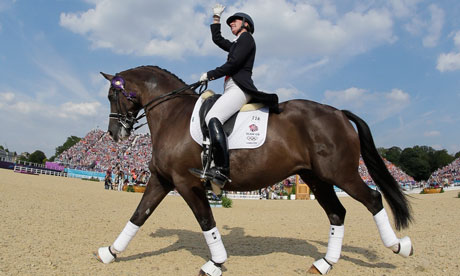As many of you dressage gurus are already aware of, Regional Championships were held at the beginning of September. Training level through Grand Prix horses competed for the chance to be declared champion of their region of six or so states and to recieve USDF recgonition for all their hard work, talent, and dedication to the sport of Dressage. However, some regions are much more competitive than others, and the region where I am from (USDF Region 4) has always been known as the "red headed step child" of all the other USDF Regions. Well, who cares? I do.
According to the rules set by the USDF, a rider is only allowed to qualify for champinships and compete in one region. But, the rider can declare that region themselves, it is not where their barn is located or where that rider lives. This wouldn't be a problem if they would place just as well as the riders from that region, and are from a region just as competitive as where they are from. But sadly, however, that is not the case.
Since Region 4 is so uncompetitive, horses and riders from large, expensive dressage barns in areas such as Chicago can declare Region 4 as their region and compete there, wiping out virtually any competition from our own horses and riders, who live, train, and compete locally in that region. This year, the highest placing person who was actually FROM Region 4 placed fifth.

This is something that needs to be looked at by the USDF. People who are trying to qualify and compete at regionals who are from Region 4 are being scared away because of all the bigger barns with more expensive horses and more competitive horse and rider teams are coming in every year and stealing away the competition from our own riders.
Many riders do this because yes, there is some logic to it. If you are from a really competitive region where if you qualified for regionals you might not place very well. So, mediocre riders from the most competitive regions declare Region 4 to be their region, and sweep our championships every year, and get higher placings because of it. Getting Reserve champion here where they might have gotten fifth or sixth in their home region.
The sad thing is, they have every right to do so. There are no rules aganist it, and it is discouraging the riders from my own region from going for higher USDF awards. I know I, personally, am hoping to qualify for regionals next year at First Level. But, honestly, if the competition that i'm going into isn't fair due to other riders basically cheating, I don't think i'll even try.











